

Combat Identity Fraud in your Hiring Process with vID


Early Fraud Detection Mitigates Human Error
Optimized Candidate Experience
Since 2020, identity theft and fraud cases have doubled. It’s now more important than ever to verify your candidates are who they say they are. vID is a mobile app that employs multiple mechanisms to address both common AND creative fraud attempts including data mismatch, bypass attacks, counterfeit documents, screen/photocopy fraud, and presentation attacks. Identity data is captured without the need for manual entry, eliminating the leading cause of screening delays and ensuring you receive clean data every time. Peace of mind knowing fraud doesn’t stand a chance - that’s the Data Facts Di erence.


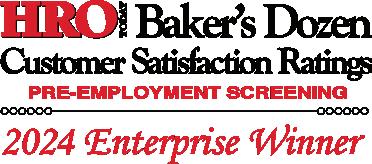






The HR Conference CruiseSM to Alaska is designed to deliver accredited learning, strategic insights, and meaningful HR connections.
Take the opportunity to deepen your expertise, earn recertification credits, and engage with peers—all aboard Royal Caribbean’s Voyager of the Seas
• Recertification credits • Unmatched networking at sea • 7 days of exploration
Juneau, Alaska
Discover fresh perspectives amid majestic mountains and glacial waters.
Skagway, Alaska
Take your leadership to new heights where gold rush history meets frontier spirit.
Endicott Arm & Dawes Glacier, Alaska
Reflect and recharge while witnessing nature's most powerful forces in action.
Victoria, British Columbia
Wrap up your voyage surrounded by timeless charm and forward-thinking dialogue.


Juneau, Alaska
Skagway, Alaska
Endicott Arm & Dawes Glacier, Alaska
Victoria, British Columbia



Bringing Human Resources & Management Expertise to
s e
www.HRProfessionalsMagazine.com

Editor Cynthia Y. Thompson, MBA, SHRM-SCP, SPHR
Publisher
The Thompson HR Firm, LLC
Art Direction Park Avenue Design
Marketing and Social Media Specialist
Julie Nagem
Project Specialist
Liz Rogers
Photographer Charles B. Thompson
Webmaster
Leo Dimilo
Contributing Writers
William Brown
Matt Cross
Stacy Greiner
Amy Schabacker
Tim K.
Marshall Goldsmith
Verified & Trusted 5 Million Covered
Dana Mullins Alex Redmond
Contact HR Professionals Magazine:
FEDlogic has been in business for over 10 years and has been evaluated by the largest national brokerage firms, stop-loss carriers, and compliance counsel
To submit a letter to the editor, suggest an idea for an article, notify us of a special event, promotion, announcement, new product or service, or obtain information on becoming a contributor, visit our website at www.hrprofessionalsmagazine.com. We do not accept unsolicited manuscripts or articles. All manuscripts and photos must be submitted by email to Cynthia@hrprosmagazine.com. Editorial content does not necessarily reflect the opinions of the publisher, nor can the publisher be held responsible for errors.
Additionally, we have conducted independent actuarial analyses to ensure complete transparency with our partners.
HR Professionals Magazine is published every month, 12 times a year by the Thompson HR Firm, LLC. Reproduction of any photographs, articles, artwork or copy prepared by the magazine or the contributors is strictly prohibited without prior written permission of the Publisher. All information is deemed to be reliable, but not guaranteed to be accurate, and subject to change without notice. HR Professionals Magazine, its contributors or advertisers within are not responsible for misinformation, misprints, omissions or typographical errors.
©2025 The Thompson HR Firm, LLC This publication is pledged to the spirit and letter of Equal Opportunity Law. The following is general educational information only. It is not legal advice. You need to consult with legal counsel regarding all employment law matters. This information is subject to change without notice.
provide families with unlimited and owledge of our experts at no cost to
b 25% of employers now provide coverage for weight loss drugs.
Over 5 million individuals have access to FEDlogic’ s services
All household family members have access to FEDlogic at no cost
Our commitment to fostering trust with employees and their families is achieved through unbiased expert advocacy.


SHRM Conferences Update
9 SHRM BLUEPRINT
16 Pictorial Highlights from the SHRM25 Conference in
26 Tennessee SHRM Conference in Nashville September 7-10
37 Mississippi SHRM Conference in Biloxi September 8-10
38 Texas SHRM Global Conference in Austin September 18
39 South Carolina 30th Anniversary SHRM Conference in Myrtle Beach September 24-26
40 NC SHRM Conference in September 24-26 in Greensboro Featuring SHRM’s Emily M. Dickens
41 ARSHRM Conference in Rogers October 8-10
42 SHRM Georgia 2025 Conference & Expo October 8-10 at Stone Mountain Featuring SHRM’s Emily M. Dickens
43 HR Southwest Conference October 12-14 Featuring SHRM’s Johnny C. Taylor, Jr.
44 Register today for SHRM 2026!
Deadline to reserve space for September Issue is August 15

Weare so excited to bring you the pictorial highlights from SHRM25 June 30-July 2 in beautiful San Diego on pages 16-17. I believe this year’s conference was truly the best one ever. There were 26,000 HR professionals in attendance! I had the opportunity to provide Facebook Live videos of many members of SHRM leadership across the Southeast, which you may view on LinkedIn. Here is the link for Johnny C. Taylor, Jr.’s most memorable presentation ever. (https:// www.youtube.com/watch?v=_ew6xc7ito0) I was also honored to catch a live interview with Emily M. Dickens about SHRM’s new education initiative. See my LinkedIn page for this video and learn how your organization can help.
We are thrilled to showcase Dana Mullins, SHRM-CP, PHR, President of the SHRM Florida State Council. Discover more about Dana on Page 6. She is passionate about advancing the HR profession and nourishing the next generation of HR leaders. Dana’s dedication to volunteer leadership with SHRM affiliates resonates with her focus on developing others and continuous learning.
We are looking forward to covering the 2025 HR Florida Conference and Expo in Kissimmee August 24-27. Exciting news – special discount for the HR Florida Conference and Expo for HR Professionals Magazine readers. Use code HRProsMag25! It was great fun seeing SHRM Florida members attending SHRM25 in San Diego. You can see our photos from the membership event on Pages 16-17.
Want to be a SHRM-CP or SHRM-SCP? If you are not yet a certified HR professional, you have an excellent opportunity coming up! Our next Online SHRM Certification Exam Prep Class begins October 22. You can register on our website to join our class. The deadline to register is October 15. These classes are affordable and convenient! You can take the class from the comfort of your home on your own computer. We are proud of our 90% pass rate! Get certified!
Hope you are enjoying our sponsored webinars! Mark your calendar now and plan to join us for my monthly webinar sponsored by Data Facts on August 7 at 2 PM. You earn 1.00 SHRM PDC and 1.00 HRCI Business Credit. Watch your email for your invitation! If you are not receiving an invitation to our weekly webinars, you can click on “Subscriptions” on our website.

cynthia@hrprosmagazine.com
Connect with me on LinkedIn
Congratulations to our Recent SHRM Certification Graduates!



Virginia Hilton, SHRM-CP
Virginia is a Talent Acquisition Specialist at Keesler Federal Credit Union in the Greater Biloxi Area. After 30 years of building a long-term career in finance at Keesler Federal Credit Union, she takes pride in her commitment to excellent service to the members and her team. After leading a team of as many as 90 members over the past 16 years, Virginia is taking on a “dream” new adventure in Human Resources - seeking, finding and hiring future talent. She is a graduate of the Mississippi Gulf Coast Community College.
Marcus Thompson, SHRM-CP
Marcus is a member of the HR Business Partner team at MLGW. Marcus has over 10 years of experience demonstrating a comprehensive understanding of effective HR practice. He is a graduate of the University of Mississippi.
Teri Touchstone, SHRM-CP
Teri is a Talent Requisition Rep at Keesler Federal Credit Union in Gulfport, Mississippi. She was previously a Human Resources Representative at Keesler. Teri received a Bachelor’s degree in Business Administration from the University of Southern Mississippi.

Dana MULLINS
Dana Mullins, SHRM-CP, PHR
SHRM Florida State Council President
Dana Mullins has over 30 years of experience as a Human Resources leader in various industries, to include city government, international shipping and financial services. She is currently the SVP/ Chief People Officer at PenAir Credit Union in Pensacola, FL, where she serves as the HR strategic partner on the Executive Team.
Dana has a bachelor’s degree in psychology from the University of Florida and a master’s degree in industrial/organizational psychology from the University of West Florida. She is an active member of the Greater Pensacola SHRM Chapter, serving as Chapter President and various other board positions. Dana has served on the SHRM Florida State Council as District Director for 4 years, serving as Leadership Conference Chair for 2 of those years. Dana has also served as Vice President and President Elect before taking on the role of President for 2025-2026.
Dana is passionate about advancing the HR profession and nurturing the next generation of HR leaders. She is known for her focus on employee engagement, talent development, and organizational culture. Dana's dedication to volunteer leadership with SHRM affiliates resonates with her focus on developing others and continuous learning.

Dear Conference Attendees,
I am delighted to welcome you to the 2025 HR Florida State Conference & Expo, brought to you by SHRM Florida. This year’s theme, “The Power of the HR Ripple Effect” reflects the critical role we play in creating thriving environments where individuals and organizations grow. We are privileged to have gathered a vast array of HR professionals, thought leaders, and innovators for this transformative event. Over the next few days, you will have the opportunity to attend numerous sessions, workshops, and networking events designed to enhance your professional skills and expand your knowledge. From insightful keynotes to interactive panel discussions, each moment is crafted to inspire and empower you to drive positive change within your organizations. We’ve also built in energizing evening events to continue the interaction and have some fun! Please visit our expansive Expo Hall and discover many businesses ready to assist you in your daily efforts to support your people.
I am proud to be a part of SHRM Florida and the powerful HR profession. Th r the work you do to elevate our shared journey. Le E. – Cause a Ripple Effect.

Da , PHR SH

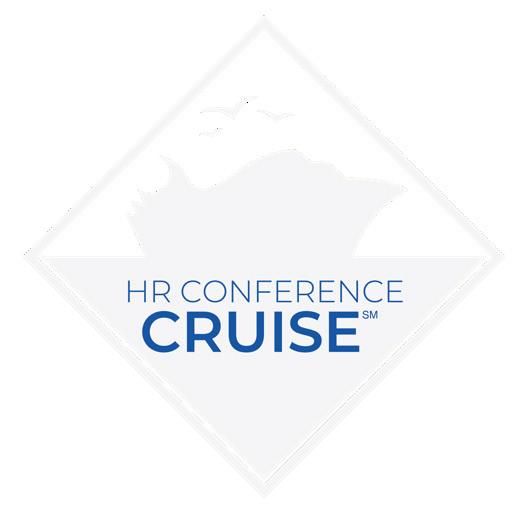

Elevate your HR expertise on board a sailing designed for professional growth and connection. Earn recertification credits, sharpen your skills with leading voices in HR, and build your professional network — all in one experience. Join us for one of THREE exciting sailings departing from Port Canaveral, Florida.

March 7-12, 2026
Puerta Costa Maya & Cozumel, Mexico

March 16-21, 2026
Perfect Day at Coco Cay, Bahamas Labadee, Haiti

April 13-18, 2026
Perfect Day at Coco Cay, Bahamas Labadee, Haiti

REGISTER FOR
We’re living in a pivotal moment. Recent shifts in Supreme Court rulings, executive orders, societal expectations, and political scrutiny have reshaped how organizations approach inclusion and diversity.
That’s where BLUEPRINT 2025 comes in.
Built on law, backed by
This event is designed to deliver maximum impact with:
GUIDED EXPERTISE:
Start with a draft template and receive guidance from top HR, legal, and business experts.
HANDS-ON PLANNING:
Craft a practical workforce plan that’s compliant, inclusive, and tailored to your goals.
ACTIONABLE RESULTS:
Leave equipped with a clear, actionable blueprint ready to deploy.
shrm.org/blueprint-hrproaugust




Never Delegate Again FOREWORD
By DR. MARSHALL GOLDSMITH

e’ve all had that moment—the one where we sense something isn’t quite working, but we can’t put our finger on why. The meetings keep getting booked, the deadlines keep getting met, and the work keeps getting done… but something feels stuck. Energy is down. Initiative is flat. And the team, once full of possibility, is now just trying to keep up.
When leaders feel this way, the instinct is often to push harder, get more involved, or tweak the systems around them. And delegation? That becomes a transactional response. Pass the task. Clear the inbox. Keep the machine moving.
But what if the problem isn’t that people are doing too little? What if it’s that we, as leaders, are giving them too little to own?
That’s the reframing Brad Federman offers in Never Delegate Again. It’s not a rejection of delegation—it’s a reinvention of it. Brad’s core insight is deceptively simple: when we treat delegation as a checklist item, we rob our people of the opportunity to grow. But when we treat it as an invitation—one that comes with trust, context, and real authority—we unlock something far more powerful.
What I appreciate most about Brad’s approach is that he doesn’t speak in platitudes. This isn’t a book of abstract advice or quick hacks. It’s a framework rooted in empathy, realworld tension, and decades of leadership experience. He understands that delegation isn’t just a management tactic—it’s a relational practice. And in his hands, it becomes something bigger: a pathway to empowerment, alignment, and meaningful growth for both leaders and teams.
Brad doesn’t ask you to delegate less. He asks you to delegate differently — to get curious about what your people truly want from their work. To slow down just enough to understand what ownership could look like for them. And to recognize that growing your team doesn’t mean giving up control—it means learning to share it with clarity and purpose.
This book is for the leader who’s ready to build something deeper than task compliance. It’s for the manager who wants to stop firefighting and start building capacity. It’s for anyone who believes that great work doesn’t come from doing everything yourself or shuffling tasks around a team — it comes from creating the conditions where others can rise.
If you’re open to it, Never Delegate Again will challenge and revolutionize how you lead. It might even change the way you think about your role entirely.
And that’s exactly the point.


Dr. Marshall Goldsmith is the only two-time winner of the Thinkers 50 Award for #1 Leadership Thinker in the World. He has been ranked as the #1 Executive Coach in the World and a Top Ten Business Thinker for the past eight years. Dr. Goldsmith is the author or editor of 36 books, including three New York Times bestsellers, that have sold over 2.5 million copies and been listed bestseller in 12 countries. His books, What Got You Here Won’t Get You There and Triggers have been recognized by Amazon.com as two of the Top 100 Leadership & Success Books Ever Written.

Brad Federman, M.Ed., is on a mission to inspire possibilities. Every day, countless people struggle in workplaces that fail to live up to their promises and values. Brad has dedicated his career to changing that narrative, helping organizations create cultures where employees and customers thrive. As the founder of PerformancePoint, he partners with industry leaders like Nordstrom, FedEx, and Mayo Clinic to build winning cultures where both the business and their individuals thrive.
He is a recognized expert, international author, speaker, coach, and consultant, frequently featured in spaces and places such as Fortune, FOX Business and Forbes.
His past literary works include Employee Engagement: A Roadmap for Creating Profits, Optimizing Performance, and Increasing Loyalty, Cultivating Culture: 101 Ways to Foster Engagement in 15 Minutes or Less, and a contributing author to 101 Ways to Enhance Your Career. Brad is passionate about helping organizations “discover and live their possible.”
His latest book “Never Delegate Again: Uncover the Secret to Growing Your Company, Your People and Yourself” is garnering much early praise.
ABOUT BRAD FEDERMAN


Servicing Nationwide
FEDlogic serves over 520 companies nationwide of various size and industry
Our clients are in all 50 states including Puerto Rico
We are the only service covering ALL federal and state benefits.
Verified & Trusted 5 Million Covered
FEDlogic has been in business for over 10 years and has been evaluated by the largest national brokerage firms, stop-loss carriers, and compliance counsel
Additionally, we have conducted independent actuarial analyses to ensure complete transparency with our partners.
FEDlogic's mission is to provide families with unlimited and unbiased access to the knowledge of our experts at no cost to the family Our primary objective is to help people, especially during times of need and crisis. Saving employers money has been a positive byproduct but never the primary objective
Over 5 million individuals have access to FEDlogic’ s services
All household family members have access to FEDlogic at no cost
Our commitment to fostering trust with employees and their families is achieved through unbiased expert advocacy.



policies from the inside-out and provide unparalleled practical guidance and insight is available throughout, and consultations are scheduled at the employee's convenience education to support families in navigating their benefit options
Empowering Employees. Supporting HR. Driving Results.



University of Memphis Student Chapter Receives Outstanding Merit Award from SHRM

SHRM, the trusted authority on all things work, awarded a national 2024-2025 Outstanding Merit Award designation the University of Memphis SHRM student chapter for providing superior growth and development opportunities to its student members. At the University of Memphis, the SHRM Student Chapter focuses on leadership and career development for college students in our region who want to enter the HR profession. Events are held monthly and includes a robust list of employers who support the growth and development of future HR leaders. Only 15 SHRM Student Chapters across the US are awarded the distinction of excellence in student leadership development annually.
“The members of our SHRM student chapters embody the future of HR leadership, making it essential to recognize the pivotal role they play in SHRM’s ongoing success,” said Johnny C. Taylor, Jr., SHRM-SCP, SHRM president and CEO. “The dedication and achievements of the University of Memphis Student Chapter demonstrate that the profession’s future is in capable and inspired hands. I commend their accomplishments and their ability to drive innovative programming, professional development, and a growing interest in HR as we adapt to the evolving dynamics of the workplace.”
The University of Memphis SHRM Student Chapter previously received the 2022-2023 Outstanding Chapter Award for providing superior growth and development opportunities to its student members. The SHRM-Memphis Professional chapter is very supportive of the work and Dr. Deneen Lester, executive director of the Salvation Army, as she serves as the College Relations Chair. Working with the faculty advisor, Dr. Kathy Tuberville, SHRM-SCP, recipient of the 2023 Student Chapter Advisor Impact Award, the team passionately helps students understand the benefits and opportunities of the HRM profession.
To learn more about how to get involved as an employer or student with the U of M Student Chapter, contact faculty advisor, Dr. Kathy Tuberville,K.Tuberville@memphis.edu

UM Student SHRM Chapter Members at FedEx Logistics during HR Discovery Day. Thanks to Brock Carlson, Talent Acquisition Manager, and team for hosting the students to expose them to the HR profession.




















YOURINFLUENCE INCREASE YOURCREDIBILITY










Enhance your HR credibility with a globally recognized certification.

• Master essential skills to confidently tackle real-world HR challenges.



• Stand out in a competitive job market with a solid HR foundation.





• Unlock doors to career advancement opportunities.

APPLY TODAY! shrm.org/cert25




INVEST IN YOUR FUTURE WITH SHRM CERTIFICATION








Strengthen your workplace impact as a senior HR leader.
• Boost your strategic influence within the organization.
• Drive transformative HR policies that align with business goals.


• Signal to executives and peers that you’re ready to lead at the highest level.





















PICTORIAL HIGHLIGHTS



















Reproductive Benefits

For many employees, employer-provided family planning and reproductive health benefits remain a top priority. It is no secret that this topic has become significantly more prominent and is a decision-making benefit for a large majority of employees. Since the U.S. Supreme Court’s 2022 Dobbs v. Jackson Women’s Health Organization decision, which ended federal protections for abortion rights, employers have continued to reevaluate and expand their reproductive health offerings. While abortion access remains a central concern, fertility services - particularly in-vitro fertilization (IVF)have gained prominence as a key component of comprehensive benefits packages. Research shows that employees who receive these benefits report higher levels of loyalty and engagement, which can lead to improved employee retention and productivity.
Legal and Regulatory Developments
Given the current legal and political environment and the growing demand among employees for these benefits, it is no surprise that state coverage mandates for fertility services are on the rise. California is the most recent state to enact this kind of mandate, joining over 20 others. The California law requires large group health plans (generally those that cover over 100 people) to cover fertility services, including IVF, beginning July 1, 2025. Small group health plans are not required to cover these services, but they are required to offer such coverage beginning July 1, 2025. The law also broadens the definition of infertility to include those who cannot conceive (either as individuals or with their partners) without medical intervention, in accordance with the American Society for Reproductive Medicine’s (ASRM) definition of infertility. According to the ASRM, a broader definition of infertility “reflects that all persons, regardless of marital status, sexual orientation or gender identity, deserve equal access to reproductive medicine.”
Conversely, other states do not require coverage for fertility services or have more restrictive definitions of infertility. In addition, court rulings in certain states, such as Alabama, have raised questions about the potential legal liabilities of IVF providers if embryos are damaged or destroyed during the IVF process. In February 2024, an Alabama Supreme Court ruled that embryos produced during the IVF process have the same legal protections as unborn children under the state’s wrongful death law. Quickly thereafter, Alabama enacted legislation to provide civil and criminal immunity to entities providing IVF services regarding the handling of embryos. Nevertheless, the case highlights the complex relationship between the legal definition of personhood and its implications for fertility services in a given state.
Another layer of complexity involves the application of Section 1557 of the ACA and whether the way a health plan defines infertility is discriminatory under this provision. Section 1557 prohibits discrimination in covered health programs and activities based on sex, race, color, national origin, age or disability. Whether sex discrimination includes discrimination based on gender identity, sexual orientation and termination of pregnancy has been the subject of litigation dating back to when initial regulations were issued in 2016. The Biden administration’s 2024 final rule sought to expand these protections, but federal courts have since issued injunctions blocking key provisions from taking effect.
Despite this uncertainty, Section 1557 has been used as the grounds for discrimination in several lawsuits, where plaintiffs allege that their group health plan’s terms were discriminatory against certain participants based on their sexual orientation. Some courts have found in favor of these plaintiffs, ruling that the policies in question were written in a way where a significant portion of the LGBTQI+ community could not meet the definition of infertility without incurring out-of-pocket costs (whereas their straight counterparts could). Other courts have ruled that Section 1557 does not include discrimi-
nation based on sexual orientation. The definition of sex-based discrimination under Section 1557 remains a contested legal issue, especially in light of recent federal court injunctions and administrative reversals. The U.S. Department of Health and Human Services has rescinded prior Section 1557 intrepretation guidance (which contained a broader definition of sex discrimination) in accordance with the Trump administration’s policies, stating that it no longer represents the legal views of the agency. In addition, the U.S. Supreme Court’s 2025 decision in United States v. Skrmetti, which upheld a state ban on gender- affirming care, may influence future litigation involving fertility benefits. Both federal agencies and courts appear less inclined to interpret Section 1557 expansively, which could potentially limit its use in challenging discriminatory benefit designs.
At the same time, an executive order issued in February 2025 directed federal agencies to develop recommendations to protect IVF access and reduce health plan costs for assisted reproductive technology. While regulatory action has not yet been taken, the order signals that IVF access is a policy priority for the Trump administration, which may shape employee expectations regarding fertility benefits and employer benefit strategies moving forward.
Employer Considerations
As the legal landscape surrounding reproductive health continues to evolve, it’s important for employers to recognize the challenges employees may face in accessing fertility assistance services, as well as the financial strain they may experience in paying higher out-of-pocket costs without insurance coverage. Employers with employees in states without fertility coverage mandates (and particularly in states with abortion coverage restrictions) have started offering standalone reproductive health benefits, including covering related travel expenses. Others are enhancing coverage under their group health plans to ensure employees have access to reproductive health care.
Since there is no federal mandate requiring health plans to cover fertility services, employers providing benefits for fertility care need to carefully assess the implications of offering these benefits as state laws continue to evolve. For fully insured health plans, the scope of benefits that may be provided depends on the specific requirements imposed at the state level. In general, self-insured health plans are not subject to state insurance laws, giving such employers more flexibility to determine the scope of these benefits.
Regardless of plan type, careful consideration should be given to how infertility is defined under the plan’s terms, and employers should continue to closely monitor legal developments. Being aware of the latest legal developments allows employers to stay compliant while providing meaningful benefits to align with their employees’ needs, which can be part of a robust employee attraction and retention strategy.



Your Round-the-Clock Expert Resource
By AMY SCHABACKER DUFRANE

HR professionals know that problems need to be solved and strategies advanced, whenever, and wherever the need arises. Whether it’s a pay equity analysis report for the new CFO, innovative ways to deliver the annual employee satisfaction survey, or helping a manager field the impact of a local issue, HR is always on, and always available. Yet, for years, being the beacon of expertise necessitated endlessly sifting through documentation and websites in hopes of landing the right information. The good news is that with the launch of HRCI CHAT, you’ve gained a 24/7 virtual assistant.
There’s no doubt that the digital revolution and global connectivity have contributed to a constant expectation of real-time responses. Workflows that previously took days or weeks have been automated, and with the advent of AI accelerated even more dramatically. There’s an underlying pressure to operate faster, more precisely, more competitively. As HR professionals, it has impacted us across the employee journey, from candidate engagement to offboarding. Further complicating the “always on, always ready” stance is the growing need to track meaningful metrics for multiple audiences. This might range from tracking the change in job performance after an L&D program, onboarding cost per employee in a specific facility, or the average cost to replace employees who leave voluntarily. The list is endless; your existing resources to fulfill them is not – until now.
HRCI CHAT changes that and empowers HR professionals, enabling you to regain valuable time and focus on strategic leadership. HRCI CHAT can support a wide variety of workflows and use cases, including:
• Talent Acquisition: Create job descriptions, structured interview guides and offer letters.
• Employee Development: Build growth plans, feedback templates and training communications.
• Compliance Assistance: Summarize labor laws and draft compliant HR policies and procedures.
• Strategic Forecasting: Model potential business scenarios to inform workforce planning and decision-making.
• Data Analysis & Insights: Analyze key workforce metrics around compensation, engagement, turnover and more.
• Reporting Capabilities: Generate polished, leadershipready reports with ease.
Going beyond day-to-day workflows, HRCI CHAT is also an “ideation” partner for HR professionals. Perhaps you’re hearing rumblings from employees that the overall team meeting experience across the enterprise is less-than-inclusive. Asking HRCI CHAT for strategies on creating inclusive meetings will result in an easy-to-implement list of improvements such as promoting psychological safety, post-meeting surveys, and round-robin sharing. With HRCI CHAT, HR departments that are stretched to the max have a trusted advisor at their fingertips and, in this case, a tangible possibility of improving employee satisfaction levels.
HRCI CHAT can also support HR professionals as you seek guidance on compliance requirements. A quick query about parental leave for the state of Iowa returns vital information about the role of FMLA, as well as statespecific laws and recent changes for private sector and state employees, even to the extent of detailing policies for adoptive parents and pregnancy disability leave.
“Information is currency” has become a popular mantra in today’s world. One might argue that not everything we need to know has a direct link to money as a value. As HR professionals, we need to deal with the practicalities of our significant role, making access to the right information at the right time priceless. We’re also instrumental in shaping the career experience for our workforce, to include creating cultures where every employee feels empowered to contribute, learn, and grow without fear of negative consequences. HRCI CHAT is an excellent resource to keep that journey on track, whether starting from scratch or needing to course correct an existing workflow.
Sound decision-making relies on solid information that is current and reliable. HRCI CHAT is based on the latest AI technologies, drawing from a broad range of trusted resources. Designed specifically for the unique needs of HR, HRCI CHAT is complimentary. It’s a great companion to our ENGAGE community, which has also been designed for HR professionals. Today’s rapid response requirements necessitate reliance on a trusted partner. HRCI is your trusted partner: our very reason for being is to advance our industry and support each and every one of you.
I hope you’ll test drive HRCI CHAT today. Please set up your free account at https://hrci.org/chat
Amy Schabacker Dufrane, Ed.D., SPHR, CAE, is CEO of HRCI® — where she is responsible for driving and disrupting the conversations about building high-performing, strategic HR teams. An engaging thought leader at the intersection of talent strategy and continuous learning, Dr. Dufrane is an award-winning leader and celebrated keynote speaker on the human side of successful business strategy in the 21st century.


A Global HR Online Community
From HRCI—the trusted leader in human resources learning and certification for over 50 years—comes a fresh, innovative online space for HR professionals around the world to connect, collaborate, and grow.

• For Every Career Stage: Emerging professionals and seasoned leaders have a place in this dynamic community.
• Forge Valuable Connections: Engage with a global network of peers and industry experts who share your vision for HR excellence.
• Develop Your Strategic Edge: Stay ahead of HR trends, address current challenges, and access resources for professional growth.

Building a well-crafted talent acquisition strategy
Most people think talent acquisition and recruitment are the same. While these terms overlap and deal with human resource (HR) functions, they’re not synonymous. Both tasks aim to achieve a company’s short- and long-term goals, but the most successful companies will know there’s a crucial contrast between the two and utilize these tasks to gain ROI within HR.
Talent acquisition versus recruitment
Recruiting is a reactive approach focusing on filling immediate staffing needs and gaps in productivity across an organization as they are made apparent. It is a critical component of talent acquisition when you experience high staff turnover or company growth.
Talent acquisition is proactive, focusing on finding qualified candidates for niche positions such as specialists, leaders, and executives that may open in the future.
Recruiting is very action-focused. It promotes specific job openings and narrows the pool down to those who would fit the role well. While necessary for every business in any industry, this fast-paced approach to onboarding doesn’t always give HR professionals the time or space to learn from each hiring experience. Nor does it allow them to get feedback from the candidates—including chosen individuals and those released from the hiring cycle.
Talent acquisition focuses on finding top talent and determining how those hires will push the team to improve and meet long-term goals. It encompasses a broader, more strategic approach to hiring. Companies identify, attract, and nurture people who may be advantageous for the company’s long-term initiatives.
Aiming to nurture relationships with potential candidates builds a talent pipeline for future needs. Nurturing involves building and maintaining a network of a broad, skilled group of workers who HR departments believe fit the company culture and actively play a part in reaching specific company-wide targets. Building and supporting relationships can help a company plan and determine a productive path forward regarding future hires.
Continuous improvement is another key attribute of talent acquisition which involves analyzing and enhancing the process from the initial internal strategy discussion to the final outreach to the applicant. Consistent improvement enables teams to learn from past experiences and adjust strategies for the most success.
Building a talent acquisition strategy
Without an action plan, talent acquisition likely won’t effectively help a company achieve its goals. Create a compliant blueprint for your hiring decisions with a talent acquisition strategy. Companies can identify, evaluate, and hire the right people for open positions to help meet their short- and long-term initiatives’ targets.
Here are steps you can take to create a successful talent acquisition strategy for your company:
Define your brand
Define your mission, values, and goals to stand out from the crowd. Strong employer branding is important to candidates. Invest in creating an employer brand that appeals to the people you want to attract. Branding can focus on what candidate characteristics are most important to your company, what charities or nonprofits you choose to support, and what business elements are most important to your team.
Here are some helpful questions to answer:
• What is most important to you as a company?
• What sets this company apart from the competition?
• What unique qualities are you looking for in potential employees?
• What is the company culture?
• What is your company’s mission?
• What goals are you attempting to achieve through your hiring?
Collaborate with your current team and stakeholders
Your existing employees and stakeholders have extensive knowledge of employee experiences and needs. Ask them what gaps may need filling and where extra help is necessary to do their job efficiently. Speak to hiring managers, department heads, and executives to determine the skills required for success in different roles.
Getting employee feedback can help your talent acquisition strategy become accurate and beneficial. It allows you to base your decisions on facts rather than assumptions. The recruitment process and ongoing strategy creation must be a team effort to drive your business forward. The company’s hiring decisions won’t reflect the team’s needs without everyone’s input.
Ensure the candidate experience is efficient If an application process is too long, you’ll experience candidate drop-off. Consider digitally transforming processes to automate parts of the hiring journey or cutting out unnecessary paperwork requirements.
Provide an inclusive and positive candidate experience. Make your application easy to find and user-friendly. Communicate with candidates regularly regarding the status of their application and what they can expect from your interview process.
Even if the person is not hired, gather feedback from them about the recruitment process to learn what areas could be improved. Strive for an experience that allows each person who engages with your company to come away with something good to say about the HR staff, the ease of applying, and the process.
Outline your business and hiring goals
Every new hire should improve the company and help you reach your goals. Defining targets makes it easier to measure success. As you build your talent acquisition strategy, focus on how each decision drives the business forward.
The best types of business goals are SMART: specific, measurable, achievable, relevant, and time-bound. Defining what your business needs with these parameters can ensure each new hire assists with the overall targets your company is attempting to achieve. Document these initiatives and get your entire team’s input.
Business and hiring objectives shouldn’t be a set-it-and-forget-it discussion. Create a process that tracks these targets and enables the team to hold each other accountable and stay on track. The key performance indicators that are valuable to monitor include:
• Candidate satisfaction
• Cost per hire
• Number of qualified candidate applications
• Offer acceptance rate
• Sourcing channel efficiency
• Submit to interview ratio
• Time to fill
Target the right audience
Proactively cultivating relationships with industry leaders, local groups, and universities can help HR teams determine where to post ads and who is available for work before other businesses. Ultimately, when you spend more time building strategic relationships and networking with potential employees, you can have a narrower talent pool to select from.
McGriff, a Marsh

Is employee engagement and communications a challenge?
The McGriff Journey ® mobile app is the solution.
Deliver 24/7/365 communication about benefits, employee recognition, wellness and more. Let McGriff Journey:
• Serve as a platform for year-round employee communications
• Drive engagement in company-sponsored programs
• Provide education to help employees lower health care costs
• Encourage team building and collaboration
• Help create a culture of health and well-being
• Support employee incentive programs


Learn more about how to curate a comprehensive employee experience. Contact McGriff to get started.

As if we all didn’t have enough to worry about.
Mitigating the Risk of Synthetic Personas in Your Hiring Process
Now we’re seeing synthetic personas in the hiring process. These are entirely fake individuals created with AI tools to impersonate human candidates during the recruitment process. Nefarious individuals and groups are using synthetic personas to apply to jobs, pass video interviews, and even obtain positions within organizations.
From North Korean deepfake operatives infiltrating IT departments to convincing AI-generated applicants flooding remote roles, the threat is real and growing. HR teams must evolve their vetting strategies to ensure they’re hiring real humans and not AI constructs.
What Is a Synthetic Persona?
A synthetic persona is a constructed identity that includes AI-generated elements like headshots, voices, resumes, and video interviews. These identities can be entirely fictitious or built on stolen real personal data. Increasingly accessible tools (deepfake software, voicecloning services, etc.) enable individuals to create lifelike avatars capable of tricking human interviewers. These personas may appear human, respond coherently, and even evade standard background checks.
Real-World Examples
• North Korean IT deepfakes. Unit 42 at Palo Alto Networks reported North Korean operators using real-time deepfake avatars in job interviews, capturing roles and embedding malware within months of being hired. https://www.darkreading. com/remote-workforce/north-korean-operatives-deepfakes-itjob-interviews
• Fake candidates en masse. At least 75 million deepfake-based personification attempts were blocked in 2024. venturebeat. com+1linkedin.com+1
The Organizational Damage Hiring a Synthetic Persona Can Do
Hiring a synthetic persona can cause serious harm across multiple areas of your organization. Here’s how:
• Cybersecurity breaches. These hires may introduce malware, steal sensitive data, or access internal systems undetected.
• Insider threats. Bad actors (cybercriminals or hackers) can use these personas to gain long-term access to company infrastructure.
• Financial losses. Investigating and recovering from a security breach synthetic personas cause can be a substantial cost.
• Compliance violations. Failing to properly verify a hire’s identity could breach industry standards or federal employment laws.
• Reputational damage. News of hiring a non-existent person can shake client and stakeholder confidence, harming your brand’s credibility and trustworthiness.
• Wasted resources. Time and money spent recruiting, onboarding, and training a synthetic persona are lost. Along with the opportunity to fill the seat with a real, qualified candidate.
7 Tips to Mitigate Synthetic Persona Risks
Acknowledging, identifying, and managing the risks posed by fake job seekers needs to be a high priority for every HR department. Here are 7 tips for handling this emerging issue effectively.
1. Use biometric identity verification (face + liveness checks).
Deploy tools like the Data Facts vID product that confirm the candidate’s identity is tied to a real, live person. Require candidates to verify during video interviews or through a mobile app that performs iris or facematch and liveness detection.
2. Social Security Number (SSN) and official ID cross-checks.
Before extending a job offer, crossverify a candidate’s SSN and government-issued ID against official records. Fraud rings often use fabricated or stolen SSNs, revealing synthetic personas.
3. Analyze video interviews for deepfake artifacts.
Train recruiters to look for red flags. Audio/video sync mismatches, lighting artifacts, unusual facial expression transitions, or delayed reactions may be evidence the persona isn’t a live person. A practical technique is to ask candidates to raise a hand, turn their head, or speak while covering their face.
4. Require social media and digital footprint screening.
Synthetic personas typically lack a consistent digital history. Conduct social media screenings via your background screening vendor. Check for long-established connections, posts, endorsements, and network activity. If they lack meaningful social content, they could be fabricated. Thin online work history is especially suspicious for senior candidates.
5. Combine biometric and documentation workflows.
Adopt a layered identity verification workflow. Perform ID document authentication and SSN validation. Then, require biometric liveness/face match and match the biometric face to video interview recordings.
6. In-person or supervised final-round interviews.
When feasible, require an in-person meeting before making hiring decisions. If remote is necessary, consider hybrid or supervised interviews by using trusted staff to witness identity presentation and candidate responses live. The long-range peace of mind is often well-worth the extra expense.
7. Monitor for post-hire anomalies and device behavior.
Implement post-hire monitoring tools that flag unusual activity like repeated VPN use, access from suspicious geolocations, or erratic login times. Behavioral analytics platforms can identify anomalies such as a new hire suddenly downloading large files or failing to attend live video meetings. Combined with ongoing IT audits and user access reviews, this proactive approach helps catch synthetic employees who may have slipped through initial screenings.
Synthetic Personas Are More Than Distant Threats
State and nonstate actors are already using deep-fake personas to infiltrate corporate networks, steal data, and occupy jobs under false pretenses. As remote hiring continues to dominate, HR teams must elevate identity verification strategies to meet this challenge.
By integrating biometric liveness checks, SSN and ID cross-referencing, social media screening, and in-person validation, employers can be better equipped to distinguish real humans from digital constructs. It’s no longer enough to hire smart…it’s essential to hire verifiably real. Vigilance, layered defenses, and recruiter education will ensure that organizations fill roles with living, breathing people.

SHRM MEMBERSHIP IS YOUR GATEWAY TO HR EXCELLENCE.
Benefits that transform careers:
HR Knowledge Advisors: Tap into the SHRM HR Knowledge Advisors for real-time expert guidance on your toughest HR questions, with 15 free personalized consultations per year to support your success.
Exclusive Research & Benchmarking Tools: Unlock members-only access to resources designed to keep you informed and ahead — covering critical areas such as the FMLA, compliance, talent strategy, and emerging workforce challenges.
Career Advancement & Professional Growth: Accelerate your HR career with access to SHRM certification prep, professional development tools, and curated learning paths — designed to help you grow, lead, and stand out in a competitive field.
“HR is my passion, HR is my field, it’s my career. ... With SHRM I can be the best HR professional I can be for myself and my organization.”
— Harinika Shropshire Human Resources Director, Louisiana Department of Education

September 7-10
Latest Employment Law Updates
Stay compliant and informed with crucial legal insights.
Talent Management & Employee Engagement
Learn best practices for attracting, retaining, and motivating top talent.
Risk Management
Minimize organizational risks and navigate challenges with confidence.
Employee Benefits & Total Rewards
Optimize compensation strategies and benefits packages for a competitive edge.
Networking & Fun in Music City
Engage in meaningful conversations, forge new connections, and enjoy all that Nashville has to offer!
Music City Center, Nashville, TN
Whether you're a seasoned HR leader or just beginning your journey, this conference will provide the knowledge, tools, and relationships you need to thrive. Register Now & Be Part of the Future of HR!
Visit us at the SHRM Tennessee Conference Booth #613

As the issues facing employers and HR professionals become more frequent, challenging, and complex each year, you need a law firm that provides advice for your specific organization.
For 50 years, Rainey Kizer Reviere & Bell has advised and represented businesses, non-profit organizations, and governmental agencies.
To learn how we can assist your organization, please contact us at 731.423.2414.

A Decade of DailyPay: The Financial Wellness Benefit Helping To Solve Your Billion Dollar Problem

By STACY GREINER
The vast majority of your employees are financially stressed, and it’s costing you billions of dollars each year.
The reason employees are so stressed is because, for most American workers, life is happening faster than ever. It seems bills are due every day, yet workers are waiting two weeks or more for their paychecks. This delay causes them to take a number of different measures to make ends meet. For example, a worker might call in sick to do a gig job to access quick cash that day to pay a bill on time. But for the employer, this means understaffed shifts or shorter operating hours, which is bad news for their customers. It can also mean overpaying to cover the absent employee, resulting in additional costs.
People want and need their money fast. So it’s no coincidence that the gig economy has significantly grown over the past decade. In 2025, it’s estimated that over one-third of the overall U.S. workforce, about 57 million people, will participate in the gig economy. In 2015, only about 10% of the workforce had gig jobs. A major driver of the rise of the gig economy are the younger generations: Gen Z and Millennials, is worth noting, because soon the workforce will be composed of the young adults in these generations. In fact, research indicates that over half of Millennials and Gen Z maintain a side hustle–and it’s only growing.
So it’s no surprise that in the past five years, employee absenteeism in hourly jobs has increased, and the yearly cost of employee absenteeism is noted to be over $225 billion dollars.
So what can be done to curb the rise in absenteeism in hourly jobs?
For the last 10 years, DailyPay, a worktech platform, has been disrupting how people are paid, and in turn helping companies avoid staffing shortages and absenteeism.
DailyPay’s On-Demand Pay solution is a financial wellness benefit that empowers workers with real-time access to their already-earned pay, when they need it. Just as one would with many gig jobs. In fact, 82% of companies offering an On-Demand Pay solution today believe it has a positive impact on absenteeism. In addition, 55% of employees with DailyPay reported picking up at least one extra shift per month.
Waiting for a paycheck seems so archaic. Think about it - what do you actually wait for anymore? From ordering food delivery to a health screening, almost anything is accessible immediately with the press of a button on your phone… except for your pay. That’s simply not acceptable, especially to the Gen Z and Millennial members of your workforce.
While most employees are paid biweekly or monthly, their living expenses, including rent, utilities, and credit card and loan payments, typically follow a different cadence. But technological innovation has accelerated most other forms of payments to be near-instantaneous, yet up until 10 years ago, disbursement of paychecks continued to follow an archaic and rigid timeline. To pay their bills on time, workers were often left with no alternative but to take side gig jobs, overdraw from their bank accounts, or incur steep overdraft fees.
Ten years ago, we set out to solve the problem of financial inequality that impacted millions of workers. We realized that if employees had access to the money they worked hard for, they would be better positioned to take control of their financial lives. And that’s where we come in.
Over the last decade, DailyPay has facilitated nearly $90 billion in transfers, equivalent to the annual GDP of countries such as Bulgaria, Panama, and Croatia, from employers into the pockets of workers. This clearly indicates the impact On-Demand Pay has on the economy today. It’s no longer just a nice-to-have benefit. It’s a necessity.
Behind each one of those billions of dollars transferred is a human story. A story of a person making a transfer to make their lives just a little better. Or just a little easier. Maybe it’s to take the family out to dinner to celebrate a birthday. Maybe it’s to pay a tuition bill. Or maybe it’s to make a mortgage payment on a dream home. But whatever the reason, they recognize that On-Demand Pay is available to them at the right moment in the right place, when they need it.
We aren’t stopping there. According to a recent study, the vast majority of workers (85%) believe their companies should actively assist them in addressing their financial problems. DailyPay has created a broad suite of financial wellness solutions from credit health to international remittances that employers can seamlessly offer their workers to elevate the employee experience, boost productivity, recruitment, and retention efforts, and increase workplace satisfaction.
All in an effort to ensure that in 10 years from now, fewer Americans will be living paycheck to paycheck and more can believe the American dream is still attainable.
Stacy Greiner CEO, DailyPay

Hard work pays off on the daily.
Get access to your pay when you want it.



OnSupreme Court – Same Burden of Proof Applies to All Plaintiffs in Title VII Discrimination Claims, Removing Greater Burden for “Reverse Discrimination” Claims
By TIM K. GARRETT & ALEX REDMOND
June 5, the U.S. Supreme Court issued a unanimous decision, overruling the Sixth Circuit’s “background circumstances” rule in employment discrimination cases. The background circumstances rule required members of a majority group to satisfy a heightened evidentiary standard to prevail on a Title VII claim.
Case Background and Federal Framework
The petitioner, Ames, is a heterosexual woman who worked for the Ohio Department of Youth Services (Department). She applied for a promotion at the Department but was rejected. Instead, a lesbian woman was placed in that role. Subsequently, Ames was demoted, and her prior role was filled by a gay man. Ames filed suit under Title VII, alleging the State of Ohio denied her a promotion and demoted her because of her sexual orientation. The district court granted summary judgment in favor of the State of Ohio and the Sixth Circuit affirmed. The Sixth Circuit held that Ames failed to show that there were background circumstances that supported the suspicion that the State of Ohio was “the unusual employer who discriminates against the majority.”
The current federal framework for a court in evaluating disparate treatment claims that rely on circumstantial evidence includes a burden-shifting analysis. The plaintiff must make an initial showing that the employer acted with a discriminatory motive. If the plaintiff can make that initial showing, the burden then shifts to the employer to provide a legitimate, nondiscriminatory reason for its decision. If the employer offers such a non-discriminatory reason, the burden then shifts back to the plaintiff to show that the employer’s stated reasons were really a pretext or cover-up for discrimination.
To establish a prima facie case for discrimination, a plaintiff must present evidence that:
• They applied for an available position.
• They were qualified for that position.
• They were rejected under circumstances that give rise to an inference of unlawful discrimination.
According to the former standard, the Sixth Circuit and other courts required plaintiffs who were members of a majority group to present additional evidence of background circumstances that “support the suspicion that the defendant is that unusual employer who discriminates against the majority.”
Supreme Court Analysis
The Supreme Court rejected this heightened burden. In a 9-0 decision, the Court held that this additional proof requirement of “background circumstances” was directly at odds with both the text of Title VII and Supreme Court precedent. The text of Title VII draws no distinction between majority and minority group plaintiffs as it pertains to claims of disparate treatment. Instead, the text focuses on barring discrimination against any individual because of a protected characteristic (race, sex, religion, or national origin), regardless of whether that protected characteristic places them in the majority or the minority. The Court went on to cite its previous case law, which reinforced its view of the text of Title VII.
Additionally, the Supreme Court found the State of Ohio’s argument, that the background circumstances rule was not actually a heightened standard, to be unconvincing.
Justice Thomas, in his concurring opinion, stated that he is even willing to consider whether the current burden-shifting framework continues to be a workable and useful evidentiary tool, likely signaling that Justice Thomas considers the “burden-shifting” analysis as confusing and not consistent with Title VII’s text.
Ames’ case will be sent back to the district court where she will have the opportunity to continue pursuit of her Title VII claims.
If you have any questions on how this ruling may impact your business or need assistance in defending against employment discrimination claims, please reach out to the authors.

Tim K. Garrett, Member tgarrett@bassberry.com
Tim Garrett helps employers solve complex issues related to all aspects of labor and employment law, providing in depth counseling and developing creative solutions to underlying business issues. He is an experienced trial lawyer, defending employers of all sizes in employment litigation claims across the country. His work has ranged from defending a major university during a significant wage and hour collective action involving thousands of employees to the successful defense of a major healthcare provider in a gender discrimination / retaliation case. In addition, Tim has served as nationwide labor and employment counsel for the largest nonprofit dialysis company in the U.S.

Alex Redmond, Associate alex.redmond@bassberry.com
Alex Redmond represents clients in all facets of employment and labor matters, including litigation involving discrimination, harassment, wage and hour issues, and proceedings before state and federal courts and administrative agencies. In addition to her litigation practice, she advises employers on all aspects of employment law, including complex issues related to contract disputes, discharge, discipline, and discrimination, as well as best practices with regard to employee leave and accommodation matters under the Americans with Disabilities Act (ADA), the Family and Medical Leave Act (FMLA), and other statutes. Alex also works closely with companies to design and draft employee handbooks and implement new policies related to the workforce.


What’s Next in Performance Management: Trends to Watch
By MATT CROSS
Performance management is no longer just about tracking goals and conducting annual reviews. As we move further into 2025 and look toward 2026, a clear shift is underway: organizations are reevaluating how they measure success, develop talent, and connect individual growth with business results. At the core of this change is a powerful blend of technology and human elements fueled by AI, real-time data, and an emphasis on employee well-being.
AI as the Performance Partner
Artificial intelligence has evolved beyond being just a backend analytics tool; it now acts as a frontline partner in talent development. Most modern HR platforms include predictive algorithms that identify performance dips, recommend learning resources, and provide insights into team dynamics. By 2026, AI is expected to take on an even more active role, acting almost like a digital coach that adapts to an individual’s working style, goals, and challenges in real time.
From Annual Reviews to Continuous Momentum
The era of relying solely on annual performance reviews as the primary feedback method is coming to an end. Instead, companies are adopting continuous performance management systems that include frequent check-ins, real-time feedback, and consistent goal tracking. This enables employees and managers to adapt to changes quickly, helping everyone stay aligned with the evolving goals of the business and individual needs. Looking ahead, the experience will become even more seamless, with performance data being passively gathered through collaboration tools and analyzed to deliver subtle, timely suggestions for improvement.
Learning and Development as Core to Performance
One of the most promising developments is the deepening integration between learning and performance. Instead of evaluating employees only on outputs, companies are increasingly focusing on growth potential—what new skills are being learned, applied, and shared. This shift toward a “skills-first” approach means that learning paths are customized, performance reviews are based on capability development, and career growth depends on adaptability.
Well-Being as a Leading Indicator
In forward-thinking organizations, employee well-being is no longer viewed as a separate HR concern; it’s a core performance metric. Burnout, disengagement, and lack of psychological safety can quietly erode productivity. Resilience and emotional intelligence will continue to be viewed as measurable and trainable dimensions of performance, enabling leaders to identify and support their teams more holistically.
Performance as a Shared Experience
Performance is increasingly evaluated not just individually but through teamwork and collaboration. Peer reviews, team-based evaluations, and network influences now play a central role in how value is recognized and rewarded. Employees are judged not only by their achievements but also by how they support others, contribute to shared goals, and demonstrate leadership at all levels of the organization. As organizations become increasingly cross-functional, this collaborative approach to performance will become even more critical.
Intelligent Goals and Evolving OKRs
Objectives and Key Results (OKRs) have gained popularity as a way to align efforts across an organization. However, the next generation of goal setting takes it further, using live business data to automatically update priorities, identify blockers, and recommend real-time course adjustments. In the upcoming year, we can expect AI to actively influence goal development by responding dynamically to market conditions, team capacity, and strategic changes, helping everyone stay focused on the most impactful work.
Toward Personalized Performance Journeys
Perhaps the most exciting development is the rise of personalized, adaptive performance management. No two employees follow the same path, and modern tools are beginning to reflect that. Individuals are increasingly supported with tailored development plans, flexible learning paths, and feedback loops customized to their unique strengths and goals. By 2026, organizations could even use simulations to model performance scenarios and optimize team setups before making structural changes.
Performance management in 2025–2026 is moving beyond metrics toward meaning. It’s not just about what gets done, but how it gets done, and how people grow in the process. With AI as an enabler, real-time data as a compass, and well-being as a foundation, the future of performance is both intelligent and deeply human. Organizations that embrace this evolution will not only see better outcomes, but they’ll also build more resilient, motivated, and high-performing teams.

Matt Cross, TraineryHCM™ Matt @trainery_brands, matt@trainery.one
Matt Cross is a learning and HCM expert with experience in delivery & technology roles, providing him with unique insight into helping TraineryHCM clients find the right solution. He is part of the ReviewCloud product solution team at TraineryHCM™.






TraineryHCM™ connects learning, performance, and compensation in one seamless platform. AI-powered tools help HR leaders maximize impact today, and modular product solutions provide the flexibility to grow. Launch, manage, and scale talent management – all in one place.

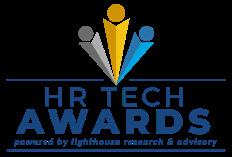



A Corporate Holiday Gift that is Meaningful & Budget Friendly!
Successful businesses understand that employees are the heart of the organization. Their dedication, hard work, and commitment drive growth, innovation, and customer satisfaction. The holiday season is the perfect time to thank employees for their contributions throughout the year. Memorable holiday gifts not only convey appreciation but foster team camaraderie and promote organizational loyalty. The difficulty is finding a holiday gift that works well for the company, will be meaningful for all employees, and will not break the bank. A fun and practical option is Holiday Gift Checks. These flexible Gift Checks are available in denominations of $5 to $50 and can be redeemed at grocery stores nationwide for festive foods. Employees will appreciate the flexibility to choose their favorite holiday meal—whether it’s the turkey for Thanksgiving, a holiday ham, delicious desserts or festive platters for a special celebration. It’s a gift that will deliver joy during the most wonderful time of the year.
Why Reward with Holiday Gifts
Employee appreciation is important anytime but especially during the holiday season. The holidays are a time of giving, making it the perfect opportunity for companies to show appreciation and reward employees with a thoughtful gift. When employees feel valued, they’re more likely to stay committed, contribute at a higher level, and be positive about their workplace. While bonuses and verbal praise have their place, holiday gift programs offer a tangible, personal way to show employees their hard work deserves something extra special.
Companies Love Holiday Gift Checks
1. 37 years Serving Holiday Gift Checks. The program’s longevity shows their customer service is committed to providing a holiday gift that companies and employees will appreciate.
2. Personalization and Flexibility
Holiday Gift Checks allow employees to purchase what matters most to them. From the holiday centerpiece like the turkey or ham to any other family holiday favorites for a family gathering.
3. Broad Appeal
These gift checks are suitable for all employees, regardless of age, background, or dietary preferences. Whether someone celebrates Christmas, Hanukkah, Kwanzaa, or simply enjoys the winter season, Holiday Gift Checks offer universal personalized enjoyment.
4. Budget-Friendly Gifting
Companies can customize the gift amount to fit the holiday budget. Denominations range from $5 to $50. These Gift Checks offer a cost-effective yet generous way to express appreciation and deliver a special festive meal at a time when expenses seem to really add up.
5. Enhances Holiday Spirit
Receiving a meaningful holiday gift lifts spirits and creates a sense of celebration at the workplace. It creates a positive environment and reinforces a culture of gratitude.
6. Convenient Distribution
Holiday Gift Checks are easy to distribute by mail or in person, making them ideal for companies with in-office or remote staff. The Gift Checks are redeemable nationwide at virtually any grocery store so employees will enjoy using their holiday gift regardless of US location.

Tips for a Successful Holiday Gift Program
• Plan Early: Order gifts ahead of time to take advantage of special seasonal savings. It will ensure plenty of time to deliver before the holidays.
• Add a Personal Touch: Include a card or handwritten note from management to make a gift even more personalized and special.
• Celebrate as a Team: Take advantage of a gift-giving moment when employees are together to celebrate and close out the year on a high note.
• Make It Inclusive: Ensure the gift is appropriate and can be appreciated by all team members by offering flexible, practical options like Holiday Gift Checks.
• Repeat Annually: Creating a tradition of holiday gifting reinforces company values and gives employees something special to look forward to each year.
Giving thoughtful employee holiday gifts is more than a seasonal gesture—it’s an investment in your people. Visit Holiday Gift Check Program or call (630) 986-5081 to learn more about current seasonal promotions on a festive gift that will deliver a memorable celebration.
Online HRCI PHR | SPHR Certification Prep Class
Online classes begin August 20, 2025 and will meet twice per week for 8 weeks on Monday and Wednesday evenings from 6:00 PM to 7:00 PM.
HRCP 2025 Study Materials included:
• Six Study Guides • Online practice exams for each Study Guide • 100s of Flashcards • HRCP materials that are among the most effective study guides available and are easy to read and understand
The total cost of the HRCI PHR | SPHR Certification Prep Class is $900 plus shipping ($25.00).
You may pay by PayPal, Credit Card, or Check.
Guarantee
If you fail the exam, you may retake the class as long as you – Attend 80% of the scheduled online classes – Score 80% on all HRCP practice quizzes during the program
Deadline to register is August 15, 2025
Contact cynthia@hrprosmagazine.com OR visit our website at www.hrprofessionalsmagazine.com
About the instructor:
Cynthia Y. Thompson is Principal and Founder of The Thompson HR Firm, a human resources consulting company in Memphis. She is a senior human resources executive with more than twenty years of human resources experience concentrated in publicly traded companies. She is the Editor | Publisher of HR Professionals Magazine, an HR publication distributed to HR professionals in Alabama, Arkansas, Florida, Georgia, Kentucky, Louisiana, Mississippi, North Carolina, Tennessee, and Texas.
Cynthia has an MBA and is certified as a Senior Professional in Human Resources (SPHR) by the Human Resource Certification Institute and is also certified as a Senior Certified Professional by the Society for Human Resource Management. She is a faculty member of Christian Brothers University. Cynthia was appointed to serve on the Tennessee DOHR Board of Appeals by Gov. Bill Haslam in 2014.




July 10, 2025
University of Memphis Fogelman College of Business & Economics
PICTORIAL HIGHLIGHTS

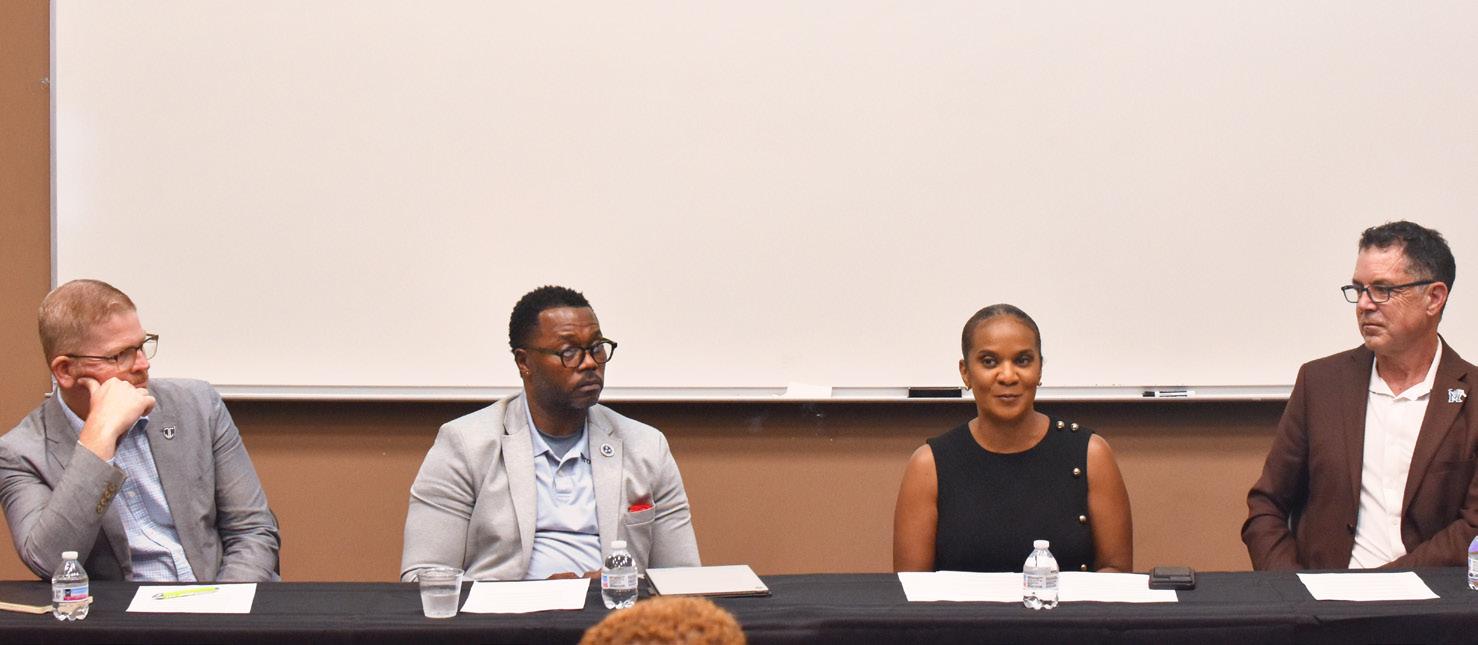


















The Future of Global Business: Dive into the 2025 Texas SHRM Global Business Conference
As the business landscape continues to evolve at an unprecedented pace, professionals are gearing up for the 2025 Texas SHRM Global Business Conference. Set to take place in Austin, this event promises to be a cornerstone for innovative strategies, networking, and professional development in the realm of human resources and global business management.
As businesses seek to navigate the complexities of international laws, cultural nuances, and technological advancements, this conference is an essential gathering point to exchange ideas and foster collaborations.

With a lineup of speakers who are thought leaders in their fields, participants can expect to delve into topics ranging from advanced analytics in workforce planning to the impact of artificial intelligence on global recruitment practices.
September 18th

Networking opportunities abound, with scheduled meet-ups and social events that allow attendees to connect with peers, mentors, and industry leaders. Whether you're a seasoned executive or a newcomer to the field of human resources, the Texas SHRM Global Business Conference is the perfect venue to inspire and be inspired.
The Texas SHRM Global Business Conference is not just an event; it's a pivotal experience that will shape the future of how businesses engage with the global environment. Mark your calendars and prepare to be part of shaping the next wave of global business innovations.
For more information and to register, visit www.texasshrmglobalconference.org. Embrace the opportunity to learn, share, and grow at the 2025 Texas SHRM Global Business Conference. The future is here, and it's filled with potential.

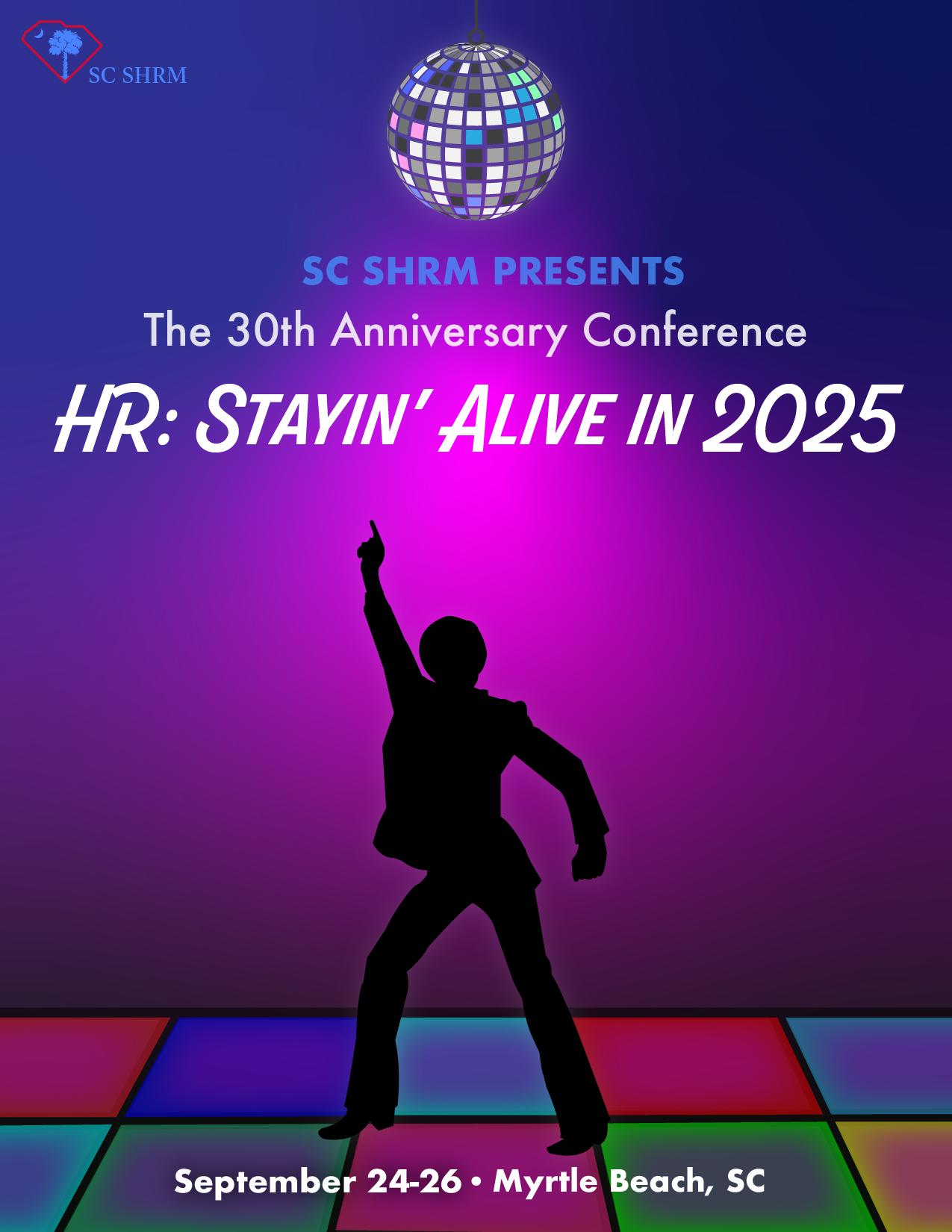






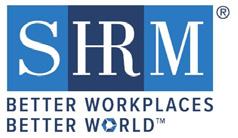




Author / Keynote Speaker / Radio Host



ORLANDO, FL JUNE 16 – 19, 2026


Registration is now open for SHRM26


This isn’t just another HR conference — it’s the HR event of the year.


The biggest minds.

The boldest ideas.

The epicenter of HR.






Secure your seat at shrm.org/shrm26-hrpaug

